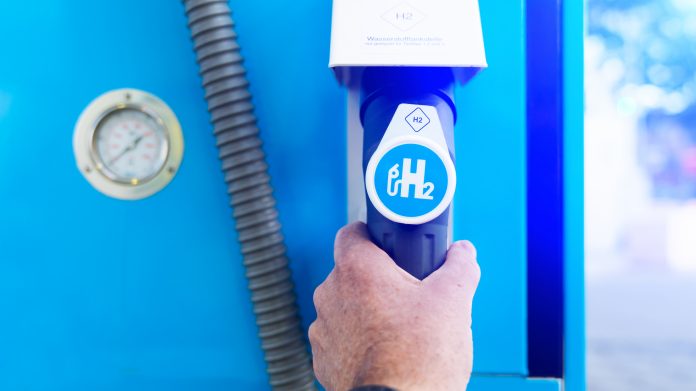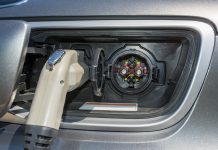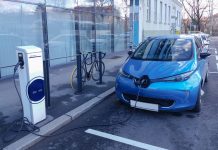As we move towards low emission alternatives to fossil fuels in transport, are hydrogen vehicles a better option than electric vehicles?
Hydrogen fuel technologies are not new. A hydrogen mixture was widely used as gas for street lights in the 1800s, and the first fuel cell was invented by Sir William Robert Grove in 1839.
Within a fuel cell, hydrogen and oxygen are converted into heat and water, which produces electricity. A hydrogen fuel cell is a similar principle to batteries that have been in widespread use for many decades, which come in all shapes and sizes to provide a power source for a vast array of items such as watches, torches, mobile phones, etc.
The main difference being, when the chemicals inside a battery are spent the battery needs to be replaced, but with a hydrogen fuel cell a constant flow of hydrogen and oxygen ensures electricity will continue to be generated. As hydrogen fuel cells have no moving parts and do not involve any type of combustion, they are very reliable.
Hydrogen as an alternative to fossil fuels?
Hydrogen is seen as a viable alternative to diesel and petrol vehicles and has advantages over electric vehicles (EV) because whereas EVs will require a huge investment to build a recharging infrastructure, hydrogen can be pumped just like petrol and diesel using the existing network of petrol stations.
Setting cost aside for a moment, one of the biggest issues facing the EV market is the limited range of the vehicles and the time it takes to recharge. For example, a hydrogen vehicle could travel on a 1,000 mile journey, much in the same way as petrol vehicles do, by filling up at a filling station when fuel supplies are low. This process takes a few minutes and the driver can continue on their journey. To fully recharge an EV takes around 8 hours, which pretty much limits EVs to the private market for people who commute short distances on a single charge and can recharge at home, or a longer commute where they can recharge at work, ready for the homeward journey at the end of the working day.
The limits of electric vehicles
The limitations and commercial market disadvantages for EVs is highlighted by the fact hybrid vehicles exist and are used today in many commercial sectors. For example, many buses, trains and trucks are widely available as diesel-electric hybrids. The fact they exist is an admission by the EV market that based on current technology, the EV is not up to the task of providing a mass transit solution. We also need to factor in the EVs use of large, heavy, expensive batteries, which need rare earth metals such as cobalt, nickel and lithium.
For now, let us ignore the fact that there are not enough of these rare earth metals on the planet to fulfil the utopian dream of everyone in the world driving an EV, they are, after all referred to as “rare” for a reason. Let us also, for now, ignore the massive amounts of CO2 produced by the mining industry to extract, transport and process these materials and let us also ignore, for now, the proven links to child exploitation associated with cobalt mines.
Are these actually the sorts of things we should be ignoring? Or should these factors actually make EVs ethically, morally and environmentally unviable?
How many tons of mining CO2 or cobalt mining child deaths does it take before driving an EV is seen as less socially acceptable than driving a diesel car? Some critics even draw parallels between the Aztecs sacrificing people to their sun god in return for a good harvest, and sacrificing children in cobalt mines to the climate gods in return for lower emissions.
This is seen by some as taking the comparison too far, as a way to attack the climate change agenda by “climate deniers”, but irrespective of which side of that debate you find yourself on, there is no justification for the horrors that go on in cobalt mines.
If we were to put all these into a pros and cons list, it would make pretty grim reading for the EV market.
The case for hydrogen
Whilst hydrogen needs platinum in the production process, it only needs it in production centres and in much smaller quantities, as opposed to the rare metals needed in every EV battery. Research is also at an advanced stage in terms of finding a replacement for platinum.
Hydrogen is actually made from water or H20, meaning there are 2 hydrogen atoms and 1 oxygen in water and electricity is used to separate the two elements. This process is called electrolysis. Many producers of hydrogen use “green electricity”, meaning electric produced by wind and solar farms in off peak times, which would otherwise be lost due to a lack of grid storage. Electrolysis produces a pure hydrogen gas, which is then converted into a liquid, using low temperatures.
This liquid can then be pumped into a vehicles’ fuel tank providing the requisite constant flow of hydrogen needed to power either a hydrogen fuel cell or even an internal combustion engine.
Given the distinct advantages hydrogen vehicles have over electric vehicles, it is somewhat perplexing that there is even a competition for supremacy in the clean transport sector, which perhaps time and a wider public understanding of the details at hand will resolve.
Editor's Recommended Articles
-
Must Read >> How to give electric vehicle batteries a second life















Why are we allowing EV’s if the best alternative is Hydrogen? Is any car manufacturer investing in the hydrogen option as a source of fuel?
The statements about hydrogen delivery over electricity for EVs is completely backwards. Charging infrastructure of EVs already exists: you can plug in at home for slow overnight charging and fast chargers can be installed anywhere the existing electricity grid has capacity. Indeed, this infrastructure has already been rolled out in many countries.
Compare that with hydrogen where almost no infrastructure exists. Liquified hydrogen is transported in special trucks and must be stored under pressure at filling stations. Using the “existing network of petrol stations” will require replacing the petrol tanks and pumps, a hugely costly exercise that no commercial entity will invest in until the source of the liquified hydrogen reaches a profitable level. This scenario is highly unlikely. EVs have a large cost advantage over hydrogen that will continue to grow as battery technologies evolve. Technology can’t really come to hydrogen’s rescue to solve the production and distribution costs.
Considering the versatility of hydrogen it is the only fuel that will be able to run everything in the future. And for people who do not realize it, hydrogen is running everything today, unfortunately it is dirty hydrogen or fossil fuels (if you were wondering what the carbon is, it is only a container for the hydrogen which does all the work).